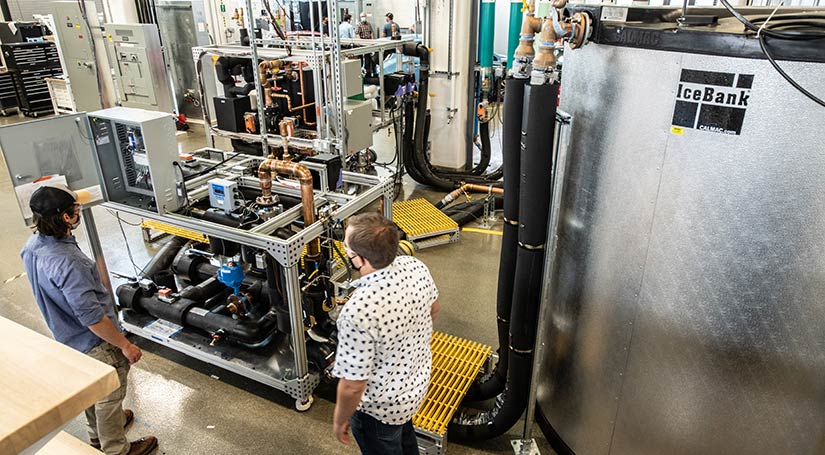Behind-the-Meter Storage Research
NREL’s Energy System Integration Facility (ESIF) explores behind-the-meter storage through load shaving with thermal and electric storage to reduce peak building energy demands.

Through the unique capabilities of the ESIF, researchers revealed a dual path toward lowering peak building electrical demands due to air conditioning needs. Behind-the-meter storage research shows the potential to minimize upfront energy costs by supplementing battery energy storage with thermal energy storage.
The NREL team used a combination of simulations and experiments to demonstrate the ability of battery and thermal storage to shave and shift the peak electric power of a building. The simulations showed how the battery and thermal storage should be sized and controlled to minimize total cost to the building owner, including extending a battery's lifetime by minimizing battery cycling and using the battery for non-thermal building loads, such as electric vehicle (EV) charging.
The experimental work used a chiller plant, which consists of a 30-ton (105 kWth) Trane chiller combined with a 160 ton-hr (560 kWhth) Calmac ice tank, as well as a 30-kWe CE+T inverter connected to a 40-kWh emulated battery. A supervisory controller used the load profile from a real-time building simulation to reduce the virtual building's peak electric power usage through coordinated control of the chiller, inverter, and thermal storage.
These results provide guidance to designers to make robust, high-performance thermal storage devices for next-generation thermal systems. The influence of system capacity, charge/discharge rates, and control of battery and thermal storage systems can now be accurately assessed in realistic scenarios.
Contact
Share
